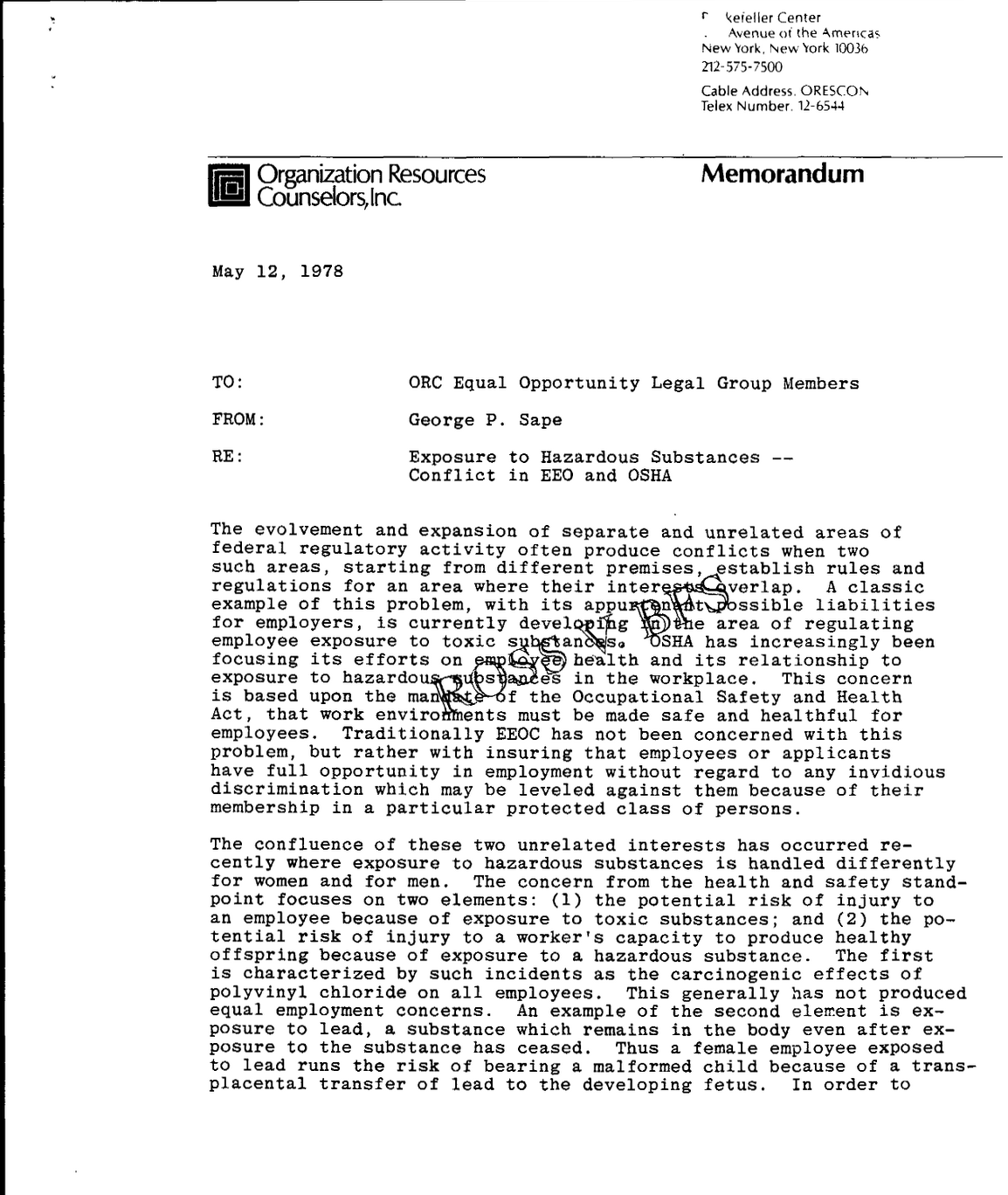Gender, Safety, and the EEOC
Roison Casey
The submission on toxic docs that I found (https://www.toxicdocs.org/d/G5r0EX4xjmb0j1E3na5njvz8V) included two documents.

First, on May 12 1978, George P. Sape, a lawyer who served as vice president for the Organization Resources Counselors Inc. (ORC), sent a memorandum to the ORC's Equal Opportunity Legal Group members. Mr. Sape outlined the current conflict between Equal Employment Opportunity (EEO) and the Occupational Safety and Health Act (OSHA). This conflict arose as workers' exposure to hazardous substances may impact certain sexes differently. For example, exposure to lead may lead to a "malformed child" due to the "transplacental transfer of lead to the developing fetus." Subsequently, employers began limiting women workers from jobs where they may be exposed to lead in order to remove the risk of damaging women's reproductive functions; however, this risks violating Title VII.
The second document was a Proposed Statement on Hazardous Substances and Equal Employment Opportunity, which was written by the US Equal Employment Opportunity Commission (EEOC). The EEOC raised their concerns about workplaces not taking equal caution to protect men and women from hazardous substances, which "may be viewed as unlawful discrimination"
Both of these documents emerged during the second wave of feminism, where feminists fought to be included in the workplace. Later this same year, in October, the EEOC passed the Pregnancy Discrimination Act, which included pregnancy as an unlawful characteristic of sex discrimination. Subsequently, these documents seem to mark important conversations regarding employer responsibility to create safe and healthy working environments without discrimination employment based on employees' individual needs. The focus on women's reproductive abilities reminded me of a question raised in another one of my courses, which questions the choice of feminists to fight for inclusion in the workplace versus other feminists who frame the workplace in itself as fundamentally exploitative.
I am very interested in digging more into whether companies have conducted lots of research on gender-specific effects of certain hazardous substances. I believe many drug trials, at least often, did not include women for a long time for fear of affecting women's reproductive functions with new drugs. Thus, I wonder to what extent companies held research for these claims. Additionally, I wonder what protective measures they put in place in order to protect women when pressured by EEOC to ensure a safe workplace for all genders.
